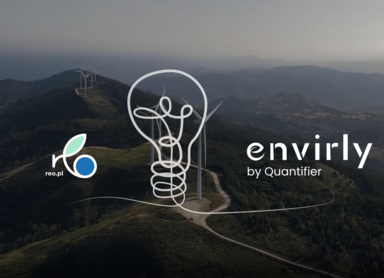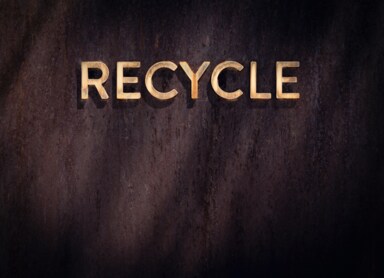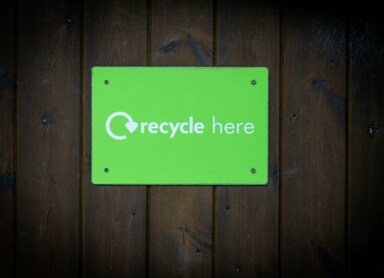Green energy in Poland – an overview of the current situation
In the public sphere, the term green energy is used in all contexts. It is on the lips of politicians, opinion leaders, many experts, environmentalists, and social activists working to protect the environment. Around the world, there are lively discussions and work underway to develop ideas and implement technologies that generate energy from renewable resources. The level of energy transition varies from country to country. So what is the situation in Poland? Can we be proud? Or do we still have a long way to go to use clean energy?
Towards a zero-emission future – the road to renewable energy sources
Global investments in electricity generation are growing, and high electricity prices are no longer surprising to anyone. Significantly burdening our budgets – both corporate and household – and polluting the environment with high CO2 emissions and waste on a global scale, a so-called climate policy is being introduced to transform conventional production into a sustainable way of obtaining energy. So, we are facing a real challenge and a very important transformation, reducing and eliminating the use of fossil fuels in favor of green energy.
The topic of alternative renewable sources raises doubts and concerns because, without sufficient knowledge and tangible results, building trust takes much longer. The fact is that generating electricity in this way has a minimal impact on the environment, as the raw materials are obtained from:
- sunlight,
- wind,
- water,
- ground heat,
- biomass,
- biogas.
It can therefore be concluded that emission-free renewable energy is the future and a relief for our wallets and the natural environment. However, before “green electricity” can flow through the cables, multidimensional actions are needed, including: assessing and modernizing the current technical infrastructure, potential installation locations—also in terms of the surrounding flora and fauna—and adapting all national laws to European and international regulations.
Read also: Centralny System Informacji Rynku Energii – zmiana na rynku energii. Co oznacza wprowadzenie CSIRE?
The current state of green energy in Poland – challenges and opportunities
In Poland, the capacity of renewable energy sources is growing every year. What is the reason for this? First of all, the global pursuit of carbon neutrality through the implementation of relevant EU regulations, directives, and resolutions that oblige us to act in favor of the environment. The prospect of energy independence and national energy security means that this sector is also developing rapidly in our country. In addition, public awareness is also increasing. Poles want to live in a sustainable way, with respect and attention to nature. And, of course, they want to pay less for their bills. Before the green transition gets into full swing and millions of dollars are spent, we need to prepare properly and thoroughly. Therefore, at the very beginning, we identify the direction we want to take and the possible challenges associated with the implementation of the project. Bearing in mind that each country has its own specific characteristics, it transforms its energy sector to a different extent and at a different pace. Therefore, it is not possible to take a universal approach to the implementation of the project. Our country has different resources and its own starting point.
In Poland, the main challenges and difficulties include:
- Outdated transmission and distribution infrastructure – the network needs to be modernized and digitized in order to keep pace with the implementation of renewable energy projects.
- Law and regulations – creating a stable legal framework, streamlining administrative procedures, and modifying regulations that limit the development of wind energy.
- Increasing investment and developing the energy storage sector – this will make it possible to store surplus energy for later use.
- Public acceptance – clean energy production raises many doubts and objections from local communities. Therefore, there is a need for environmental education and promotion of investments in municipalities.
- Ensuring energy security – the basis for this is better planning, balancing, and developing flexibility towards sources, as renewable energy sources are characterized by supply instability.
As we can see, there are a few issues that need to be worked out in order to be able to use green energy. By knowing and systematizing the list of current challenges, it will be easier for us to shift our attention to the opportunities that lie ahead. Poland has great potential for the development of green energy – technological, geographical, and social. The most important of these are:
- Photovoltaics – using solar energy. Favorable climatic conditions provide opportunities for the development of solar farms, which have recently become truly profitable.
- Onshore – wind farms built on land.
- Offshore – offshore wind farms in the Baltic Sea.
- Construction of energy storage facilities – storing surplus electricity will make it possible to control the variability of renewable energy sources and build the country's energy security.
- Biomass and biogas – stable, but the scale is limited.
- Support from EU funds – one of them is the National Recovery Plan (KPO).
- Development of local initiatives – cooperatives, energy clusters, programs for prosumers – people who produce electricity themselves. This makes it possible to generate cheaper energy more independently.
The development of renewable energy in Poland – an analysis of trends
In Poland, there is a steady increase in investments aimed at transforming the energy sector into a zero-emission one. In line with global policy and trends, this is also a necessity. The scale of the changes taking place in our country becomes clearly visible, even tangible, when we cite and focus on a handful of important facts and data collected recently.
In December 2024, the total installed capacity of all electricity sources in Poland amounted to 72.8 GW (conventional energy and RES). Of this, 33.6 GW is the share of renewable energy sources (approx. 46.2%). Compared to December 2023, at the end of December 2024, the installed capacity of renewable energy sources increased to 33.6 GW, i.e. by 18.2%. Moving from the general to the specific, currently the largest renewable source of electricity in Poland is the sun, followed by wind. In December 2024, the installed capacity of photovoltaics was 21.2 GW – almost 63% of all renewable energy sources. Wind power ranks second with an installed capacity of 10.2 GW, or 30.2% of RES capacity.
Next in line are offshore wind farms and biogas. To sum up, throughout 2024, a total of 143,011 new RES installations with a total capacity of 4,735.42 MW appeared in Poland.1 The progressive trend towards decarbonization of the energy sector is clearly visible.
Energy policy and green energy – prospects for the future
The growing number of investments in renewable energy sources is possible thanks to modern technology, infrastructure digitization, and huge financial outlays. All of these components, which form complementary projects, operate within a specific legal framework. In Poland, issues related to green energy are regulated by the Renewable Energy Sources Act of February 20, 2015. The Act includes, among other things, definitions and detailed descriptions of green sources, rules for connecting renewable energy installations to the grid, and many other key issues.
Over the years, the act has been amended to include: net billing – instead of discounts for prosumers, there is now the possibility of developing collective and tenant prosumers, continued adaptation to the RED II Directive of 2018 (EU Directive on the Promotion of Renewable Energy Sources), i.e., the transformation of Europe into a community of environmentally and climate-neutral countries. In addition, in 2019, the Polish government developed and submitted to the European Commission a National Energy and Climate Plan for 2021–2030. The document was based on the 2018 Regulation of the European Parliament and of the Council (EU)2. In 2024,
The Ministry of Climate has presented a new version of the document, but it has not yet been sent to Brussels. According to its content, the energy transition in Poland is to be accelerated. It will look as follows. By 2030, approximately 56% of Polish electricity will come from renewable energy sources. Coal mining will be reduced by half.3 As a member state of the European Union, each country is required to prepare and submit such a document to the European Parliament. Chronologically, in 2021, the Polish government adopted and regularly updated the PEP2024 strategy, which also concerns the future of the Polish energy sector. What does it entail? The most important goal is a thorough reform of the Polish electricity market – partial decarbonization in favor of renewable energy sources, the construction of nuclear power plants, the development of offshore wind farms, and ensuring energy security until 2040, while meeting the climate requirements of the European Union.
The year 2023 was important for the Polish wind energy sector because the 10H Act was amended. According to its provisions, the distance between wind turbines and buildings must be at least 10 times the length of the turbine, including the blade. In 2024, the existing regulations were liberalized, allowing the construction of wind farms closer to homes, i.e., at least 700 m, provided that the local community and the Local Spatial Development Plan agree. The most recent document is the RED III Directive, which amends the RED II Directive. It sets a more ambitious target of achieving a 42.5% share of renewable energy in the EU's overall energy consumption by 2030. 4 In addition, it also introduces specific targets for sectors that are key to reducing greenhouse gas emissions and transitioning to cleaner energy sources, i.e., industry, transport, and construction.
Legal actions and measures within the scope of pro-environmental solutions, commitments, and requirements are a long-term process aimed at ultimately achieving the necessary zero-emission electricity production. The European Union has chosen the path of renewable energy sources, and Poland, as a member state, is obliged to prepare and implement appropriate amendments. As a result, we are facing an energy transition, which is already underway, to completely switch from fossil fuels to alternative, inexhaustible sources, including solar, wind, and water.
Examples of successes in the production and use of green energy in Poland
Challenges and barriers to the development of green energy in Poland
In Poland, the energy sector is constantly changing, and the transition to zero emissions has become a reality. Of course, this is the result of many overlapping factors. Globally, energy policy is moving towards decarbonization and environmentally friendly solutions in order to take advantage of the unlimited, renewable resources of nature. Poland is not lagging behind in these efforts. In addition to changing public awareness, a sincere desire to care for the environment, and paying less for electricity, we are obliged to sign up to and implement climate policy. As a member state of the European Union, specialists are preparing documents, plans, and updates to existing regulations in accordance with its directives. So far, Poland has already done a lot to produce green energy. Photovoltaics is developing rapidly, and the installation of large farms is particularly profitable. Currently, Poland is one of the leaders in growth in this sector in Europe. The “My Electricity” program has been a success, supporting hundreds of thousands of households in the installation of photovoltaic panels.
Wind farms come next. Here, too, we are among the leading European countries in terms of installed wind turbines. Some have been operating for over 20 years and have become a permanent feature of the local landscape. Let's move from land to the open sea, where wind turbines are also in operation. And their number is still growing.
To sum up, of course, we may lag behind Western European standards in terms of technology, legislation, and society. In addition to visible successes, we have many challenges and barriers on the horizon that we will overcome. We can undoubtedly expect further, and probably much faster, development of renewable energy sources in the country and globally.






![Mój Prąd 6.0 program - rules and all additional information [2025 UPDATE]](/storage/13_manny-becerra-vgf9kogcu1u-unsplash_cb32b2e7.jpg)